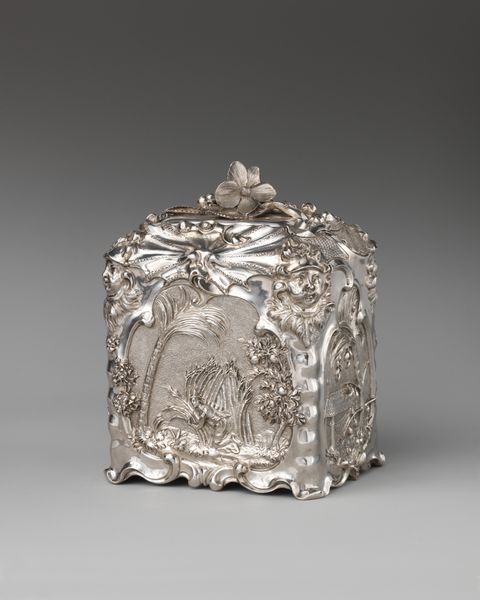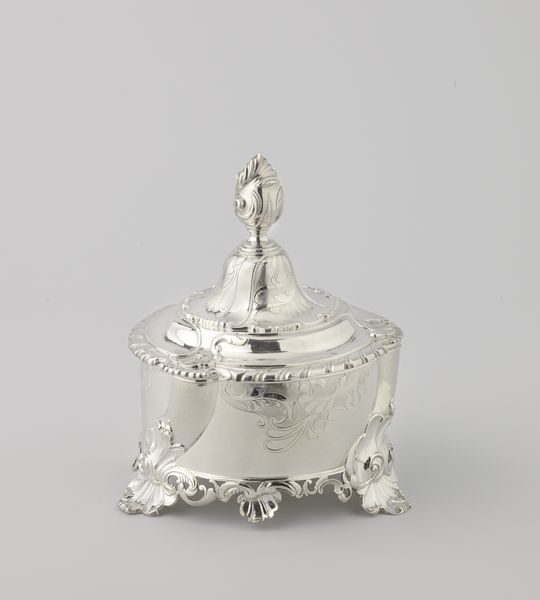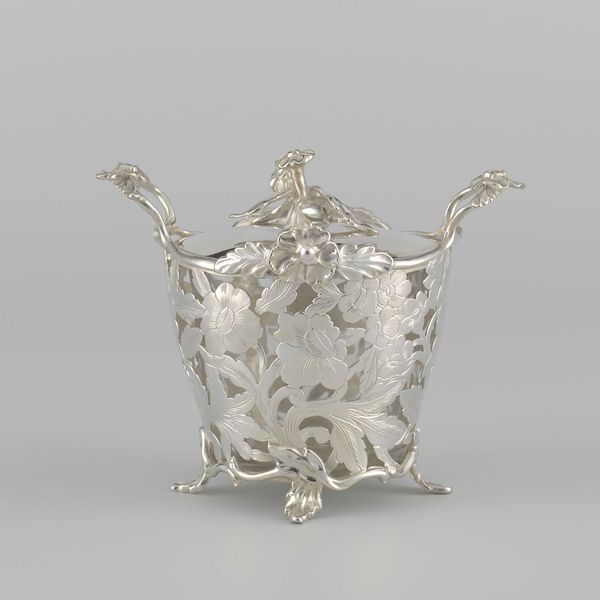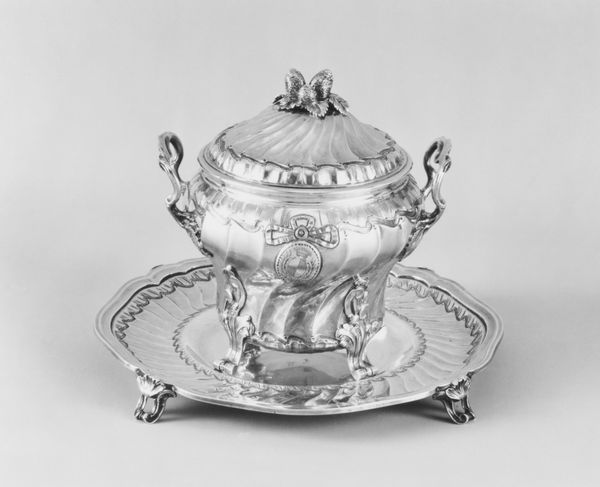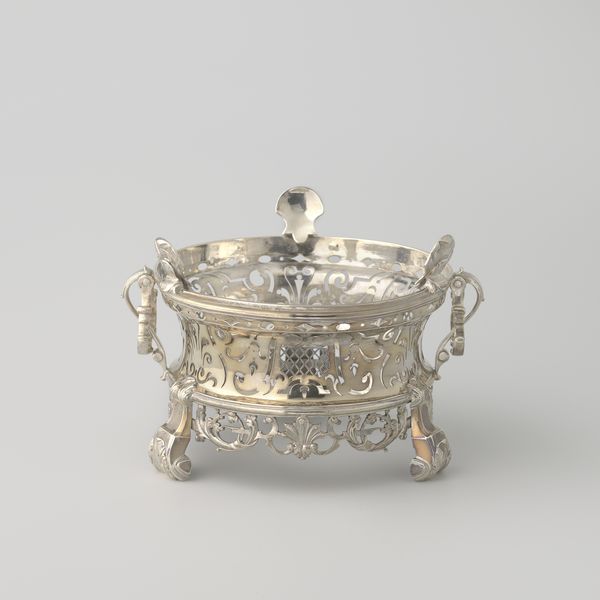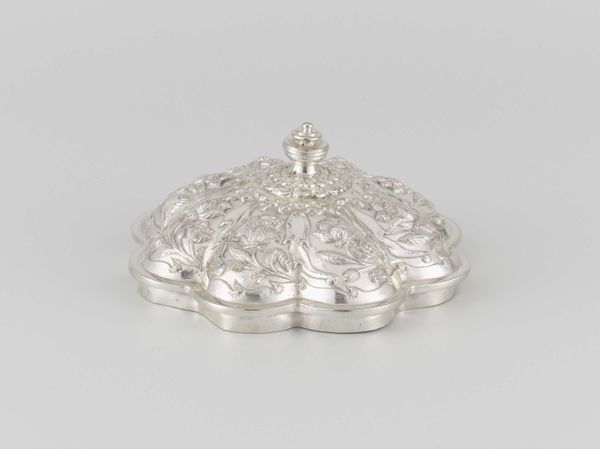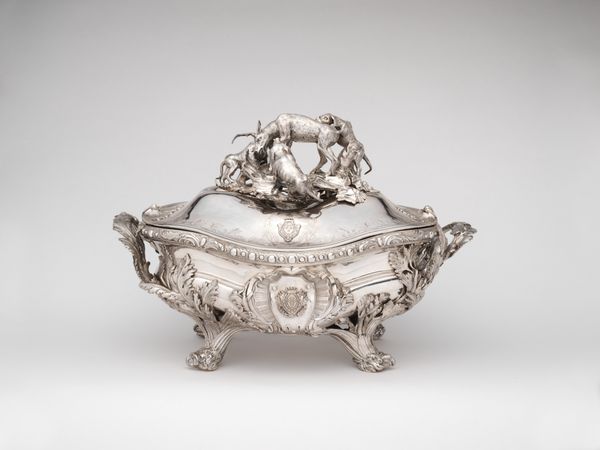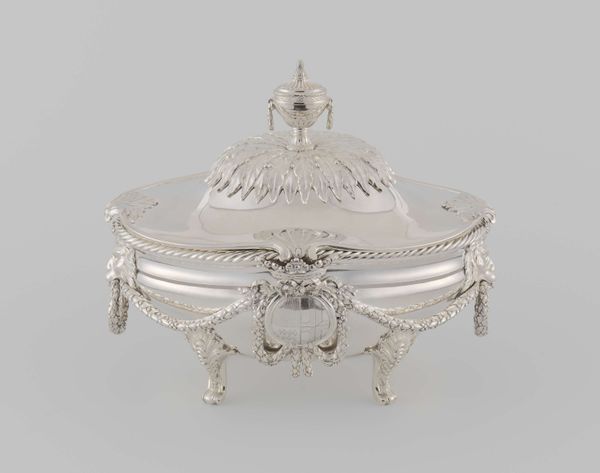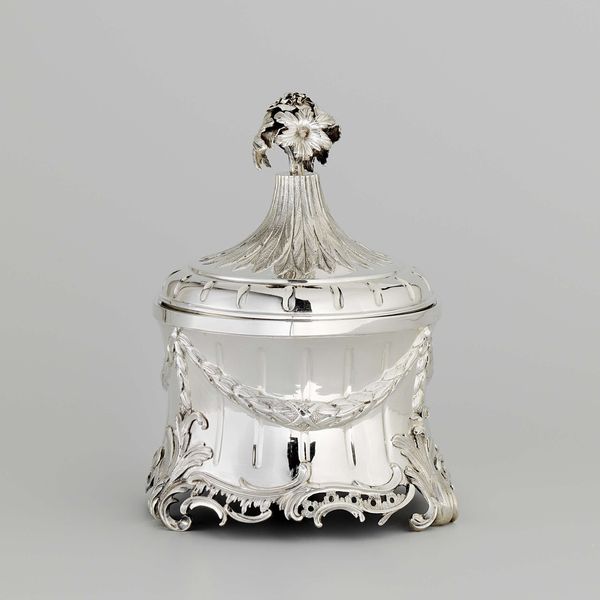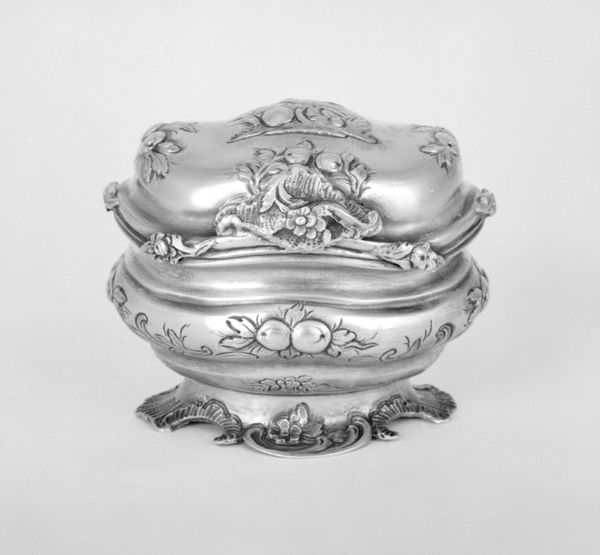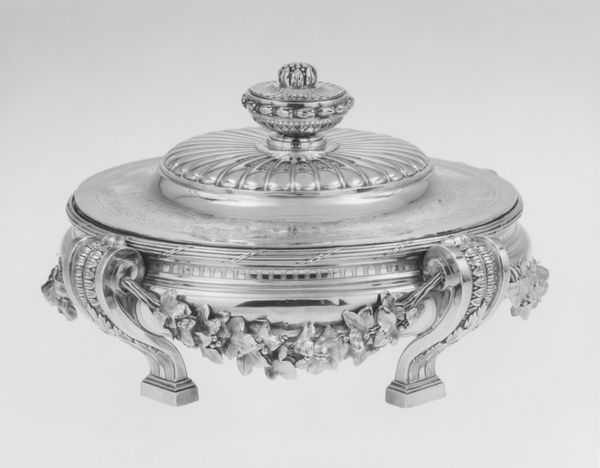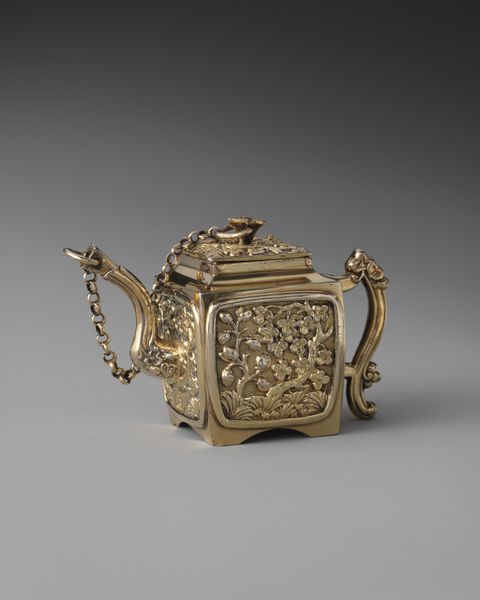
silver, metal
#
silver
#
metal
#
decorative-art
#
rococo
Dimensions: Overall: 4 7/8 x 3 15/16 x 3 1/16 in. (12.4 x 10 x 7.8 cm); 8 oz. 17 dwt. (274.5 g) Body: H. 4 1/8 in. (10.5 cm); 7 oz. 1 dwt. (219.9 g) Cover: 1 oz. 15 dwt. (54.6 g)
Copyright: Public Domain
Editor: Here we have a delightful, intricately worked Tea Caddy from 1762-1763, crafted from silver, a gleaming metal sculpture. I'm struck by the delicate details, like little blossoms blooming across its surface! How would you describe its allure, its historical and cultural magic? Curator: Ah, magic is spot-on. Imagine the rituals surrounding this caddy. Each bloom, each flourish whispers of faraway lands, of fortunes amassed and social hierarchies sharply observed. Do you see the Rococo style in the sweeping lines and ornamental flourishes? Editor: I do. It’s incredibly ornate; almost a bit much, in a beautiful way! What’s the story this opulence tells? Curator: This level of detail was meant to show off immense wealth, during a period when sugar and tea had only recently become accessible within social elites. How might the value placed on precious metal speak to global trade during the mid-18th century? Editor: It emphasizes that the preciousness of silver shows the rarity of the tea it once held. It makes one contemplate a more contemplative moment amid a hectic world. It becomes a ritual of quiet luxury. Curator: Precisely. Each careful scoop probably stood in defiance of everyday pressures, and it made owners like tiny monarchs, enthroned. Tea time—a fleeting chance to reign. What's more romantic than that? Editor: Wow! I never thought of it like that! It shows how decorative arts carry deep histories! Curator: Yes, indeed. And that’s what makes them perpetually fascinating, don’t you think?
Comments
No comments
Be the first to comment and join the conversation on the ultimate creative platform.
